By Louise Irvine
John Eyre was one of the stars of Doulton’s Lambeth Studio, creating stunning exhibition vases and tile murals for the world’s fairs. He taught pottery painting to young women and was also a very talented painter and book illustrator. Towards the end of his career, he produced nostalgic watercolors of potters at work from his Doulton days.
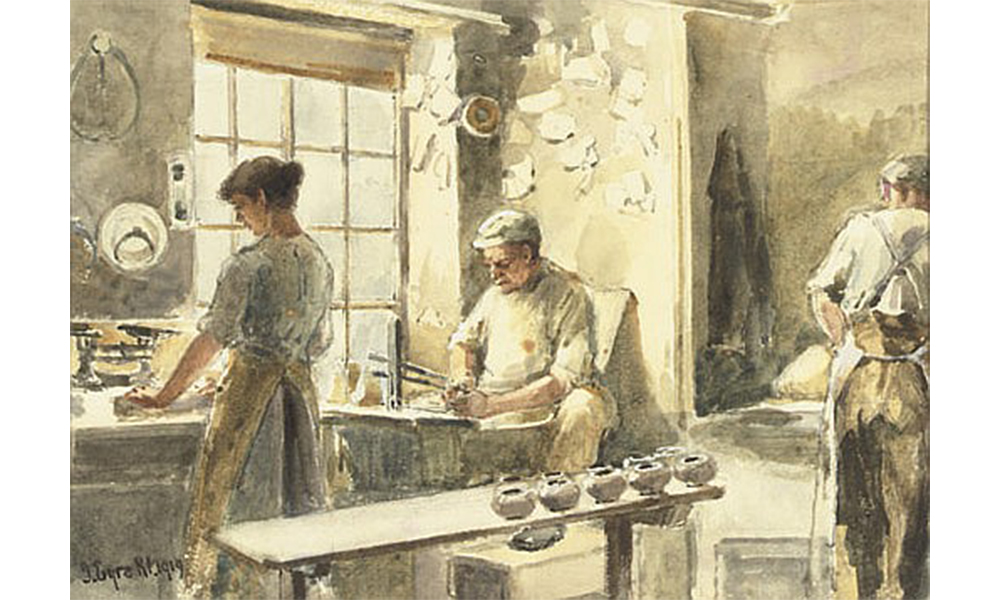
Throwing Pottery by J. Eyre
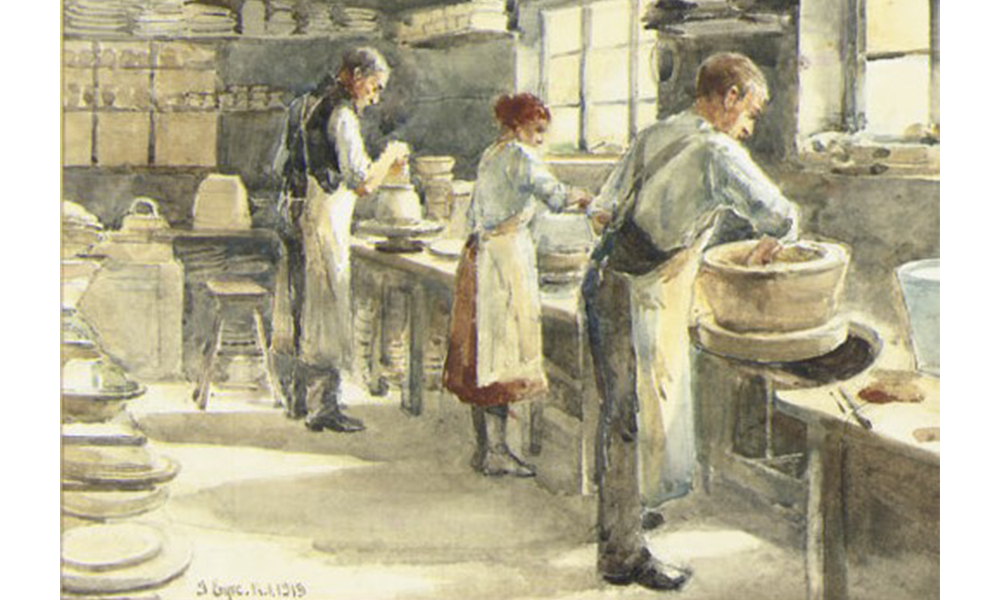
Potters at Work by J. Eyre

Loading the Kiln by J. Eyre
John Eyre (1847-1927) was the son of George Eyre, a Wedgwood artist specializing in biblical subjects on Queen's ware. John studied at Stoke Art School and the Royal College of Art in London, where he was recognized as an accomplished watercolor painter. In 1872, he was employed as a designer, painter and general foreman at the Minton Art Pottery Studio in Kensington, London. Eyre followed in the footsteps of William S. Coleman, the founding director of the studio, who left in 1873. Coleman’s paintings of classical maidens and pretty putti were in the fashionable “toga and terrace” style of Victorian romantic art and were diligently hand-painted on plaques, tiles and pilgrim flasks by the female students working for Minton.
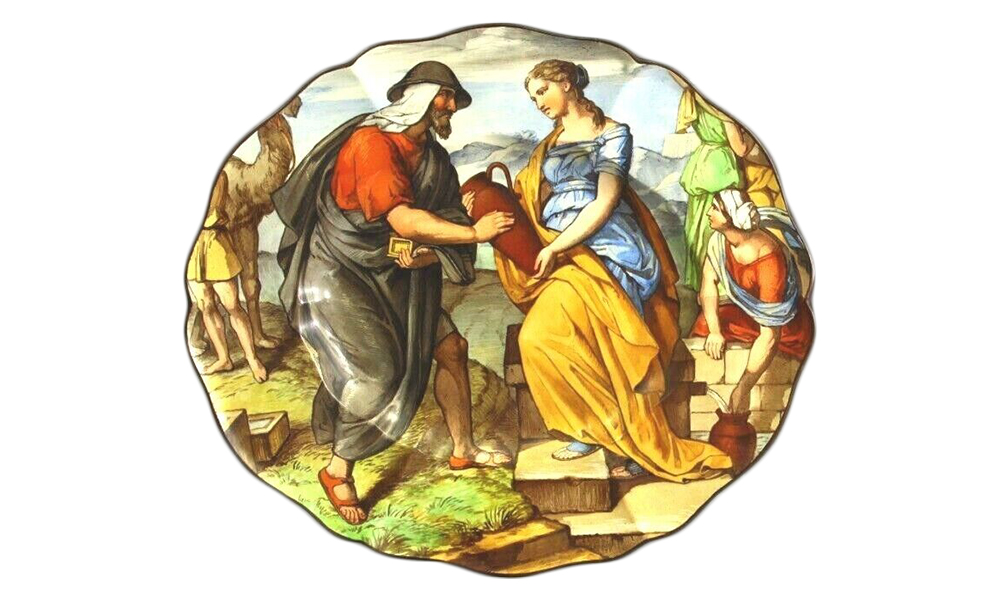
Wedgwood Creamware Biblical Scene by G. Eyre

Minton Plaque by M. Gladstone after Coleman

Minton Pilgrim Flask by J. Eyre

Minton Tile by J. Eyre
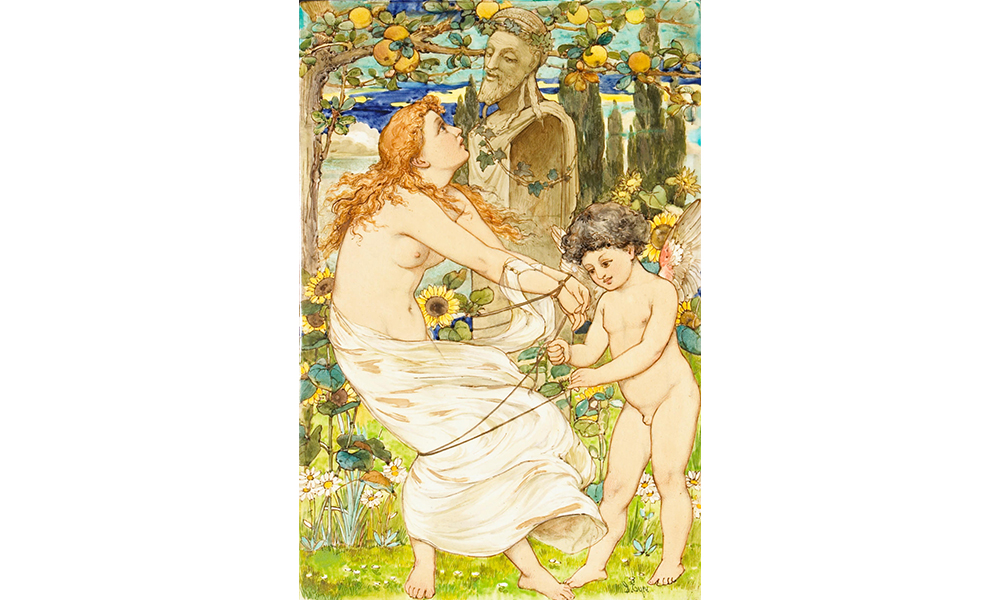
Minton Cupid's Ties Tile by J. Eyre

Advert for Phillip's Ceramic Galleries
Eyre continued to design charming scenes of Cupid and Psyche for the Minton Studio before a catastrophic fire destroyed the building in 1875. It was not rebuilt, and Eyre established a decorating studio in W.P.G. Phillip’s ceramic galleries in Oxford Street, where he taught young women how to paint on pottery. The vogue for china painting reached its peak in the late 1870s and 80s when the Howell & James store organized annual exhibitions for amateur and professional artists, which were patronized by high society and royalty.

Doulton Inventors Murals by J. Eyre at Cafe Royal
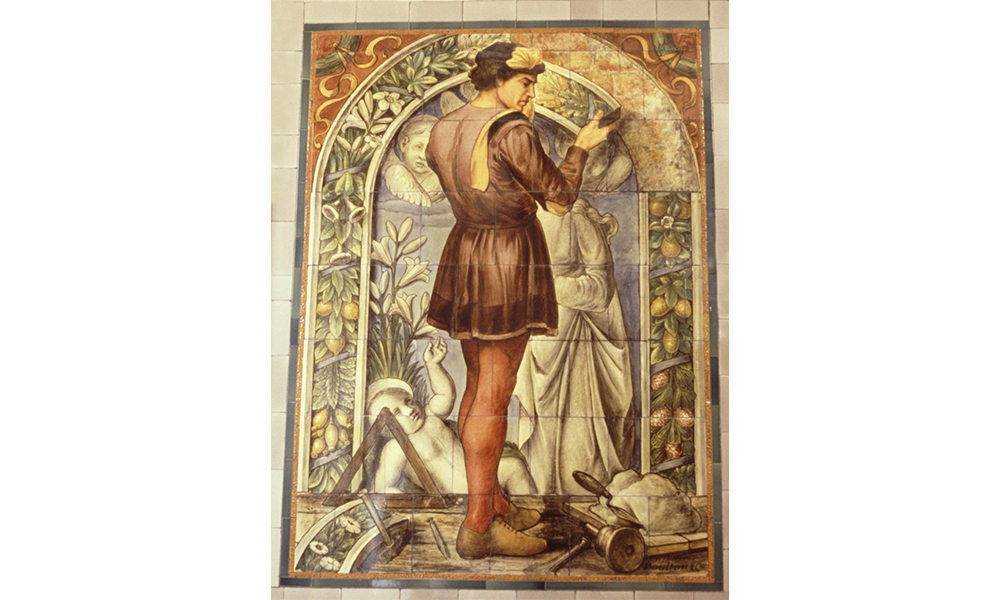
Doulton Della Robbia Tile Mural by J. Eyre
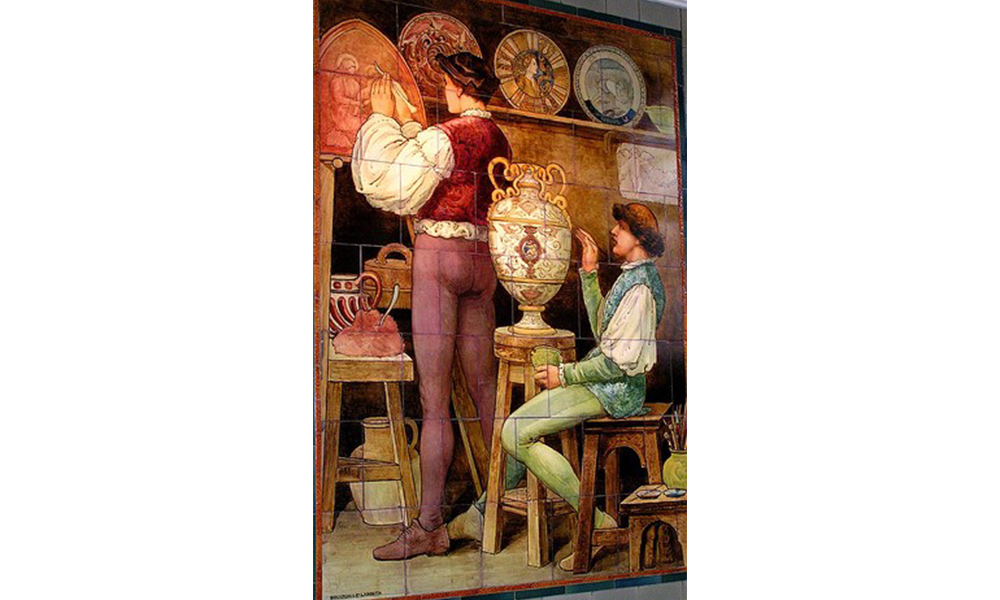
Doulton Tile Mural by J. Eyre
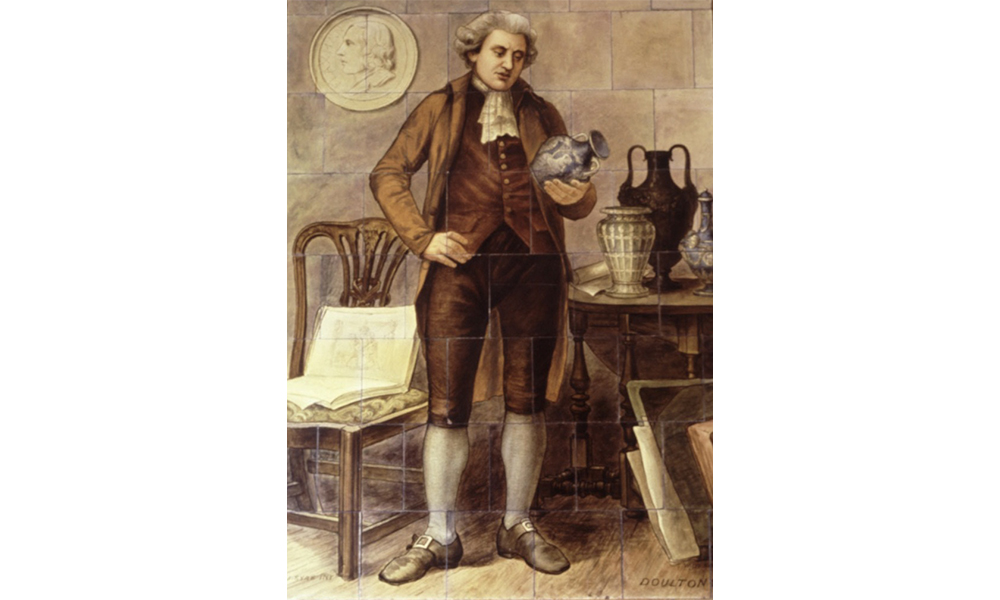
Doulton Josiah Wedgwood Tile Mural by J. Eyre

Tiles by John Eyre on the Doulton Trophy 1884 Health Exhibition
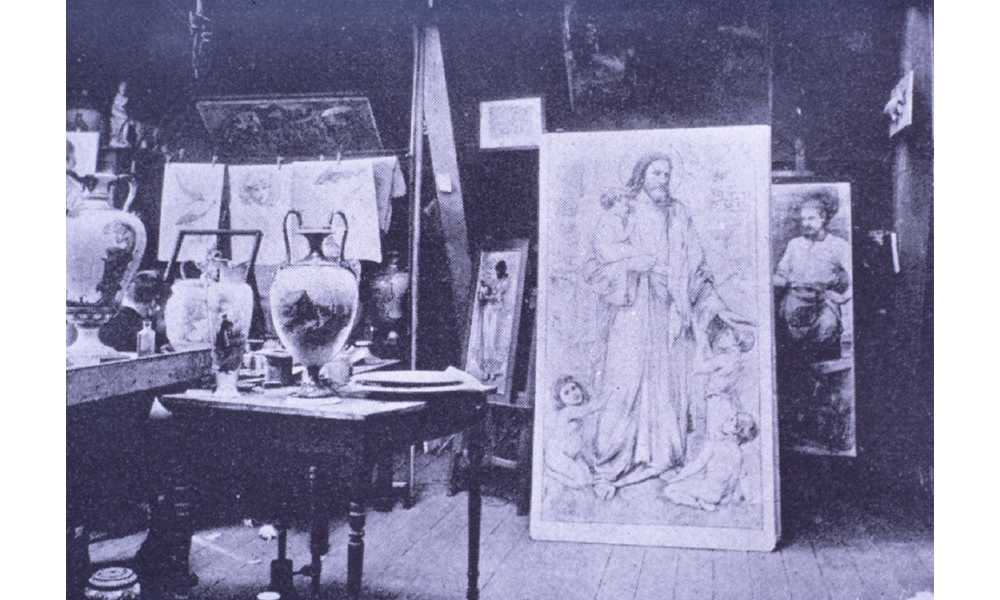
John Eyre's Doulton Studio with Tile Murals
Doulton’s Lambeth Art Studio also promoted pottery decoration as a career for young women in London. In 1883, when John Eyre joined Doulton, there were more than 150 women at work in the Faience painting department producing vases, plaques and tiles. Eyre became the studio’s foremost designer of large-scale tile murals, including a series of famous potters and musicians for the International Health Exhibition of 1884 which are now in Queen Alexandra's House in London. The following year, he designed a series featuring Victorian inventors for the Inventions Exhibition of 1885, and these are now in the Café Royal pub in Edinburgh, Scotland. His grand finale was a series of tile murals for the 1893 World’s Columbian Exposition in Chicago, representing Columbus.

Perseus and Andromeda Vase Wiener Collection
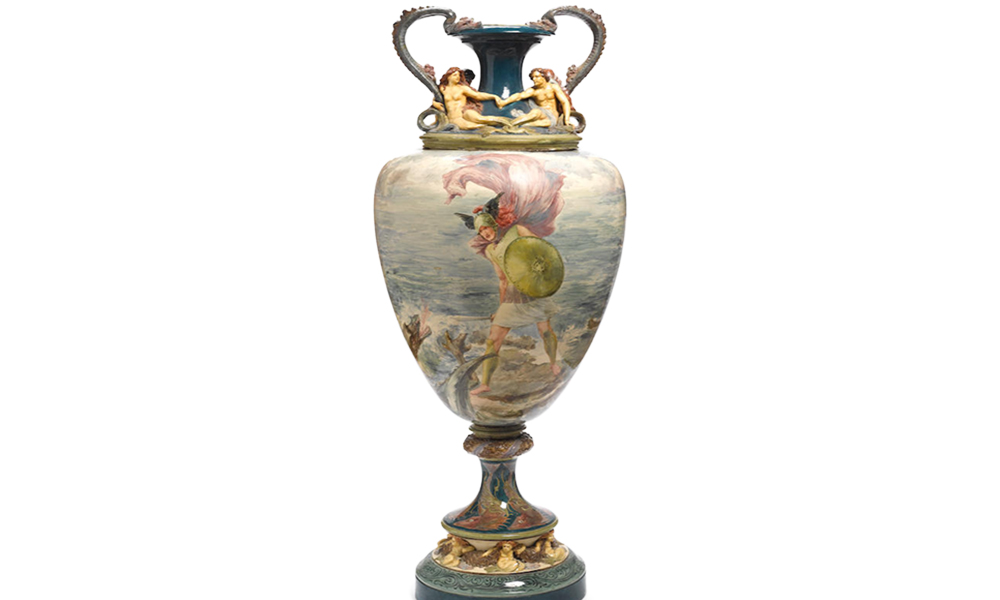
Doulton Crown Lambeth Perseus and Andromeda by J. Eyre
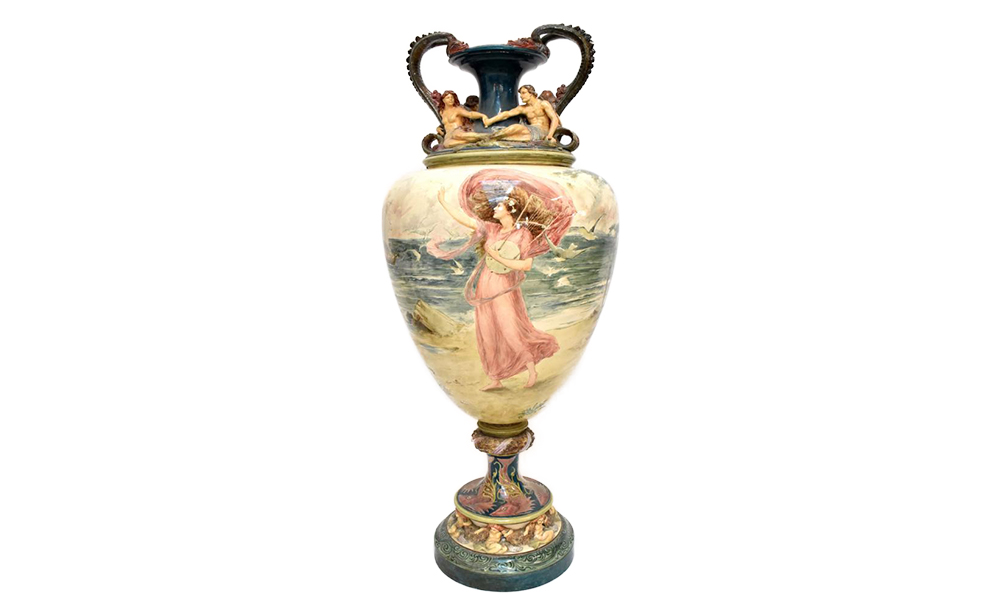
Doulton Crown Lambeth Ariadne Lamenting Vase by J. Eyre

Doulton Chaucer Vase by J. Eyre

Doulton The Grasshopper by J. Eyre
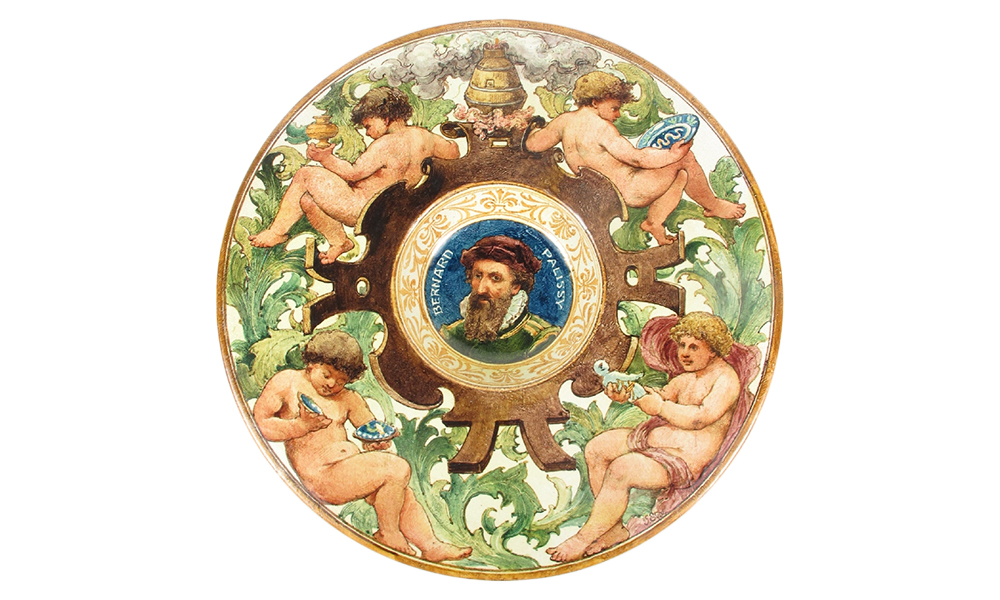
Doulton Palissy Plaque by J. Eyre
Eyre was also responsible for several of Doulton’s monumental exhibition vases for the world’s fairs. For the Paris Universelle Exhibition in 1889, he designed a vase featuring Chaucer’s Fair Women which was shown again in Chicago in 1893 and is now in the National Gallery of Victoria in Melbourne. In Chicago, he also exhibited two large vases, four feet tall, inspired by classical mythology depicting Ariadne Lamenting and Perseus and Andromeda. The Perseus vase was discovered in a south London home in the early 1980s and was on display at the Sir Henry Doulton Gallery for some years before arriving at the Wiener collection in the Hamptons. The spectacular scene shows the Greek hero Perseus battling Cetus, the sea monster, to rescue Andromeda.

Autumn by J. Eyre
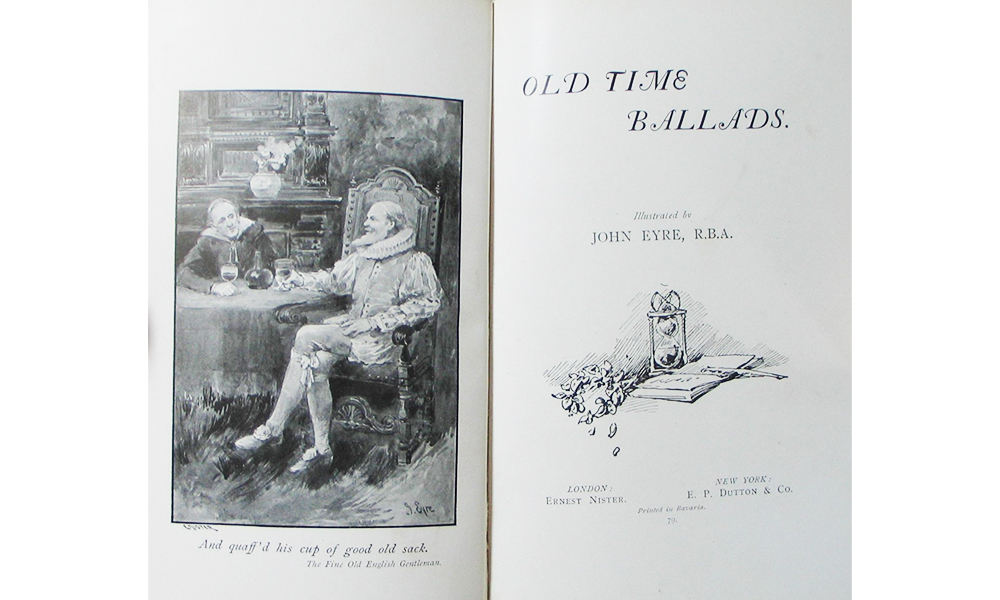
Old Time Ballads by J. Eyre
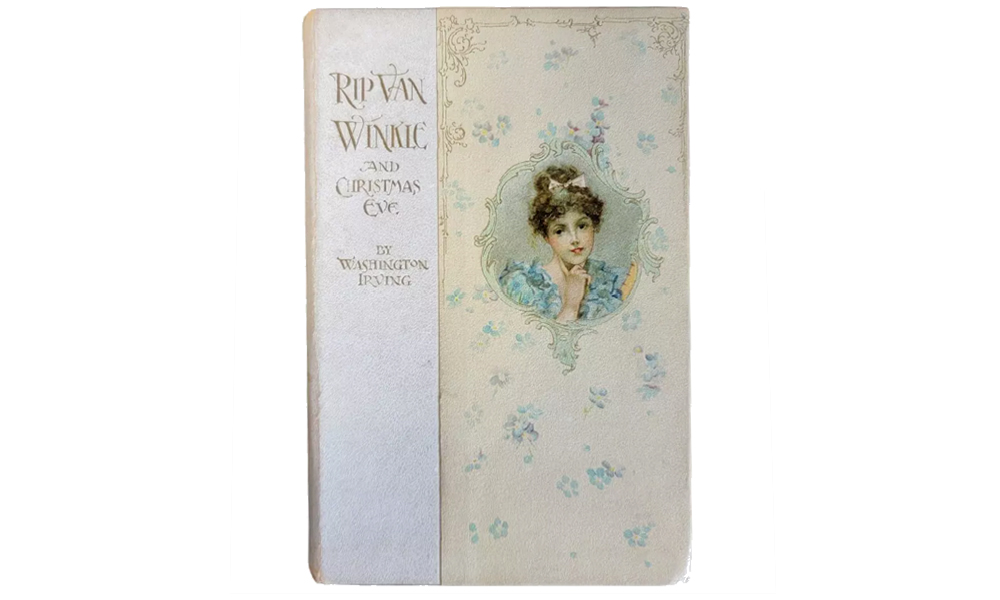
Rip Van Winkle Christmas Eve by J. Eyre
Throughout his career in the pottery industry, John Eyre built his reputation as a fine artist. He exhibited his first painting at the Royal Academy in 1877 and sold his work at commercial galleries in London. He left Doulton in 1897 to concentrate on his painting career, having been elected as a member of the Royal Society of British Artists. He also illustrated books, such as Old Ballads published by Ernest Nister in 1906. In 1917 he was elected to the Royal Institute of Painters in Watercolors and produced several nostalgic paintings reflecting his experiences in the pottery industry.
Read more about putti at WMODA
Putti in Porcelain | Wiener Museum
Read more about tile murals
